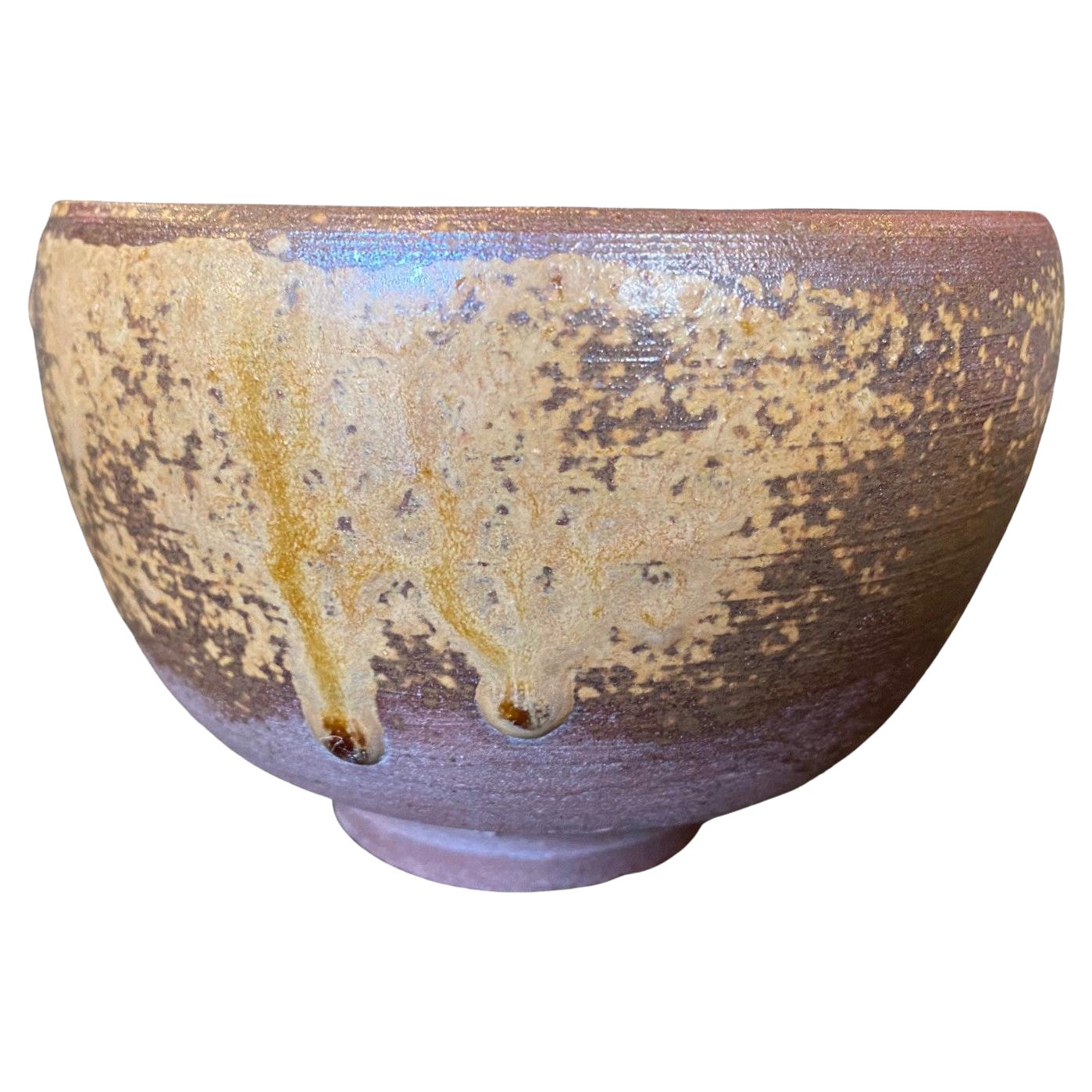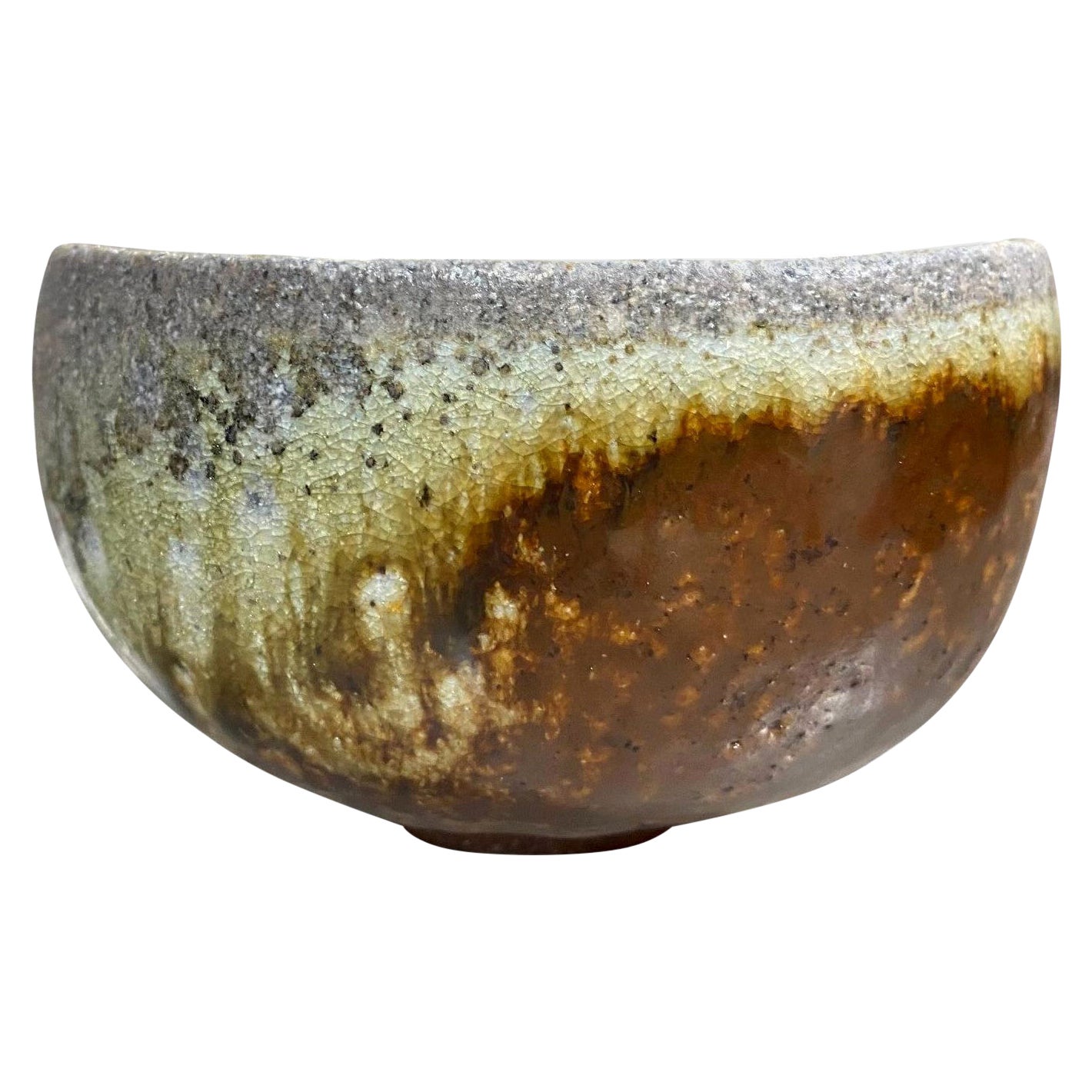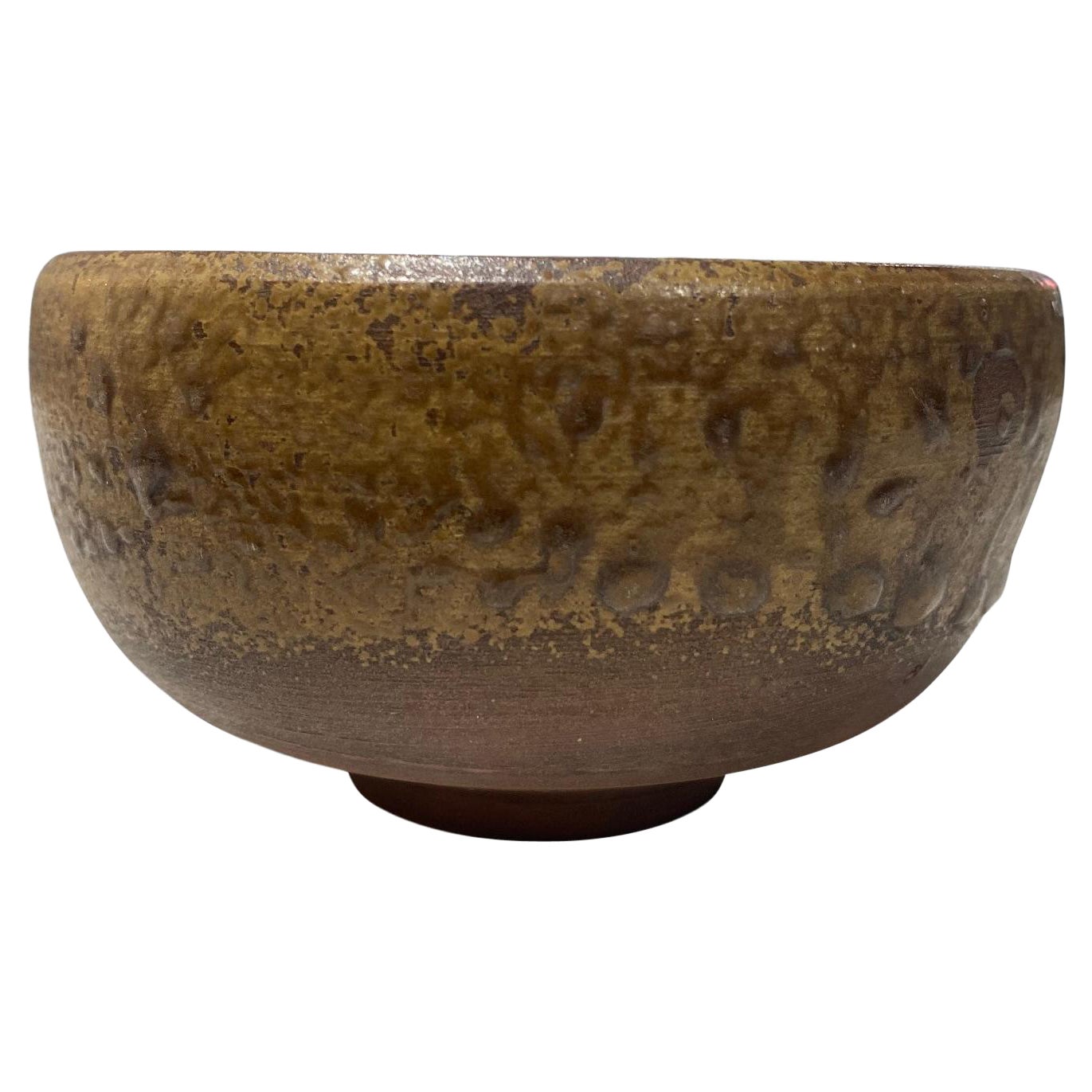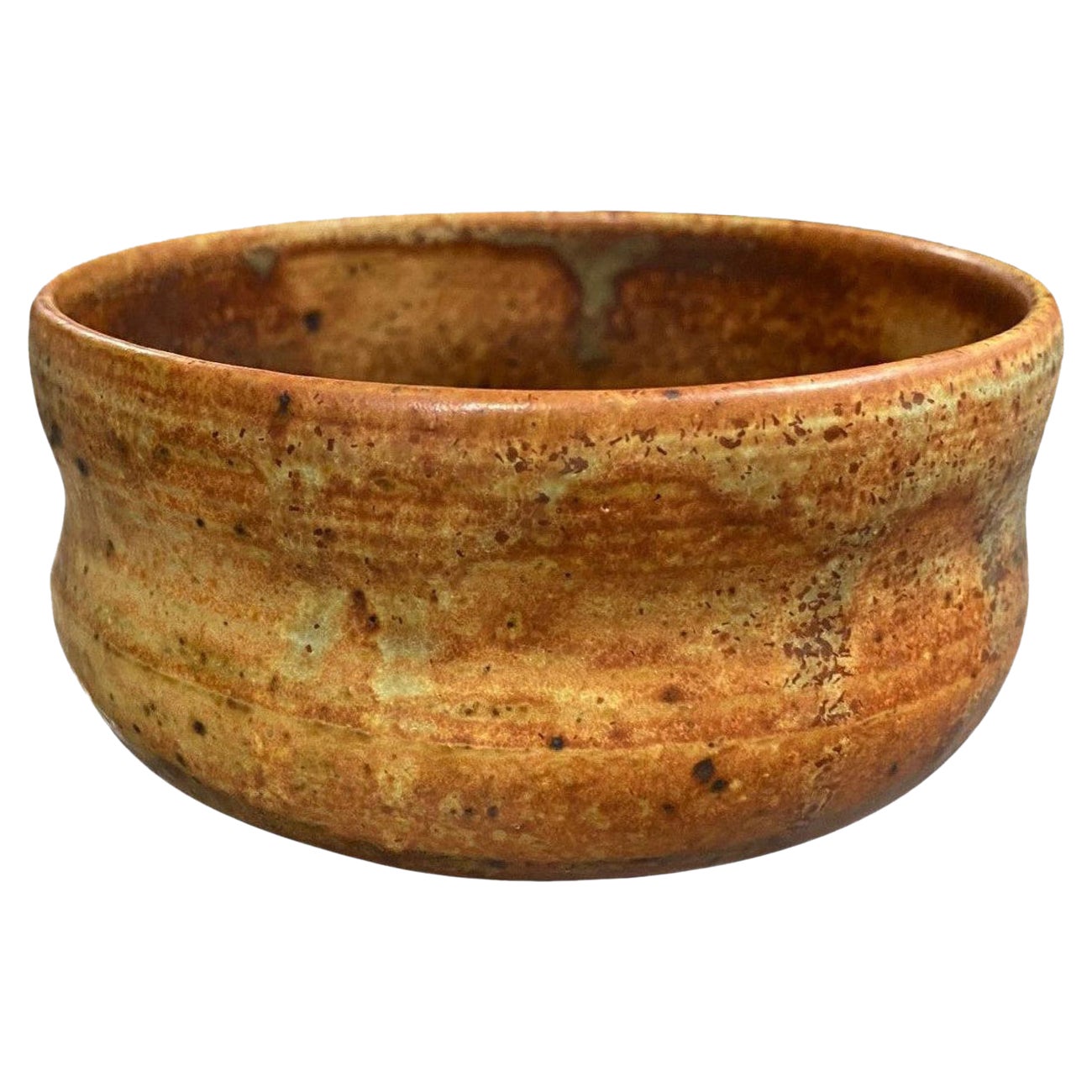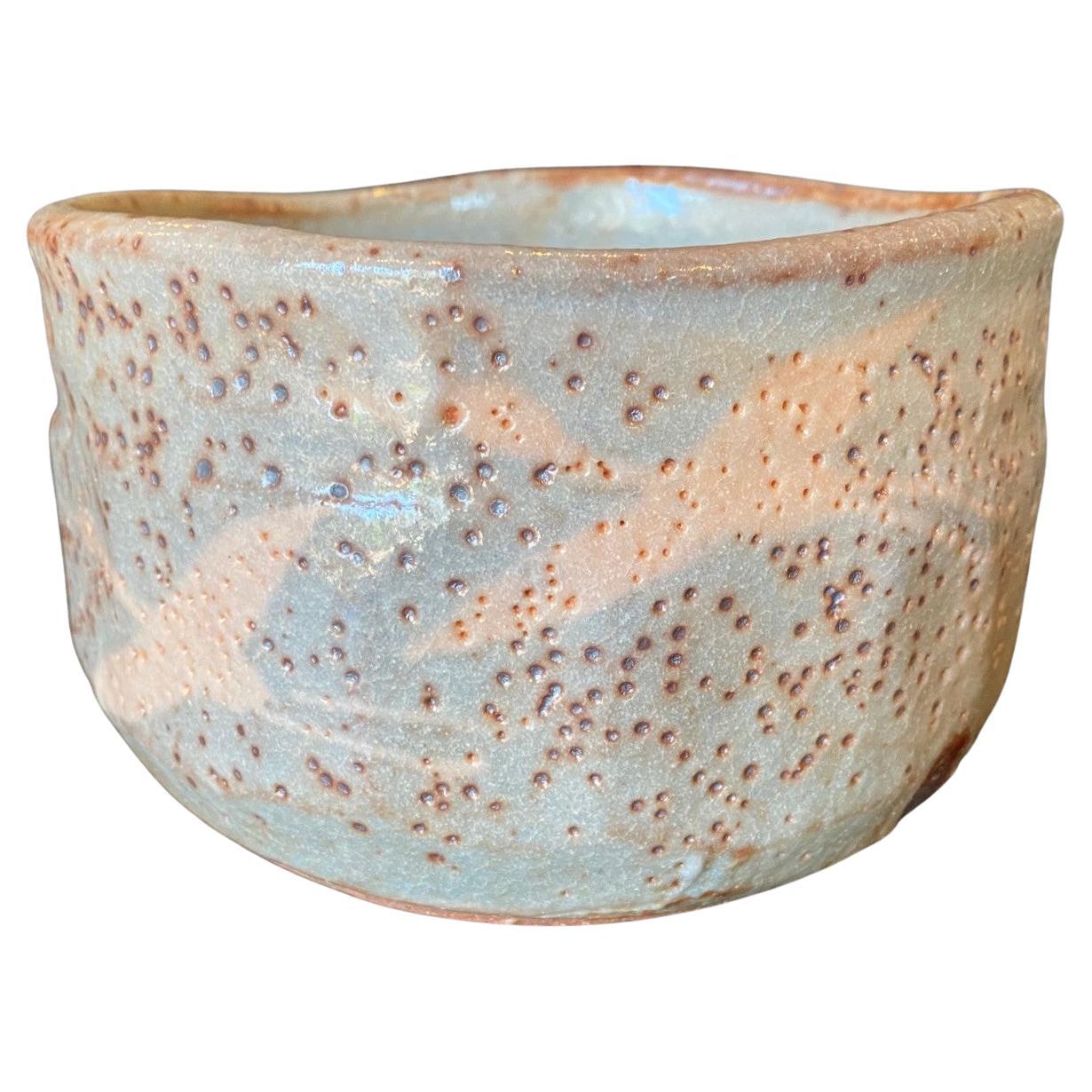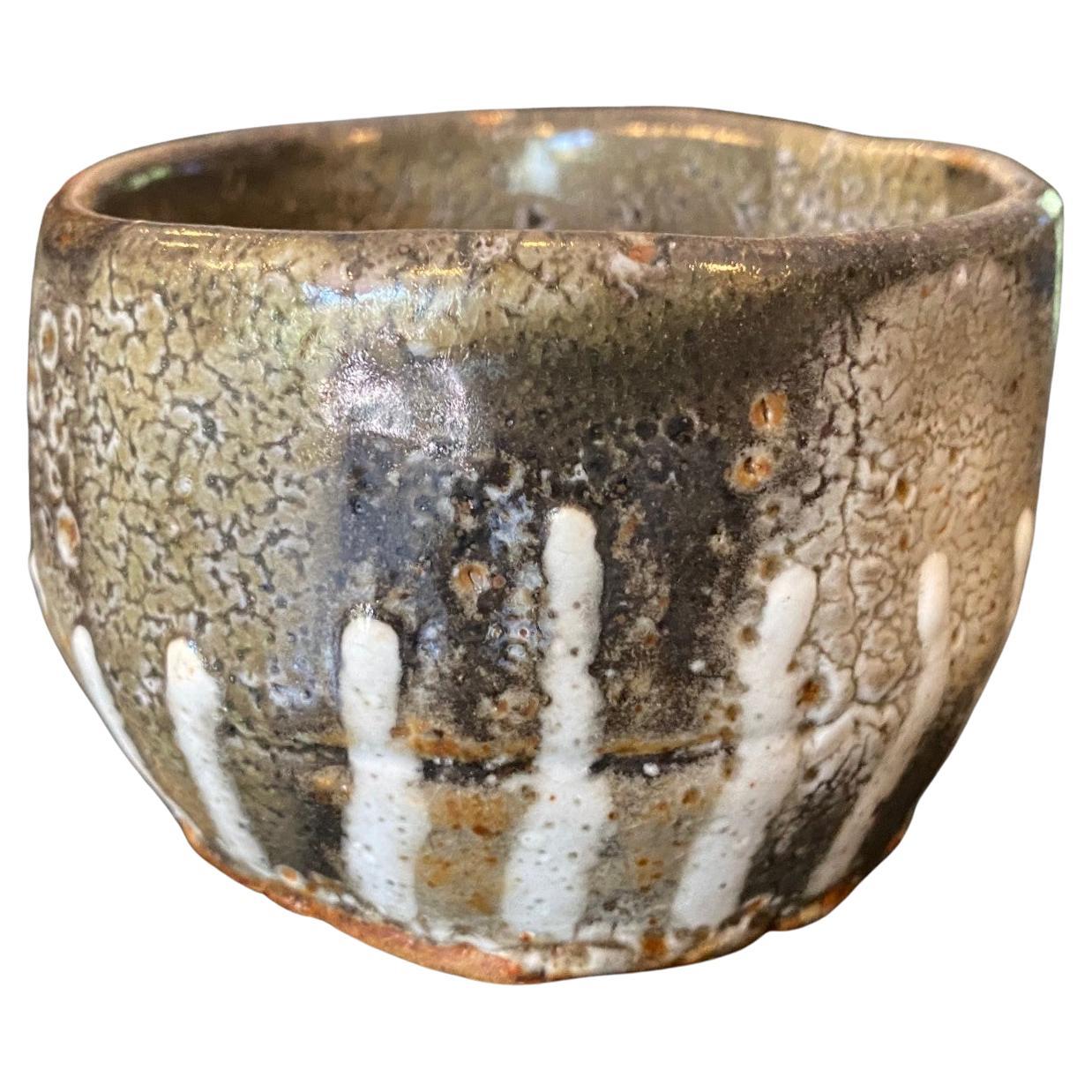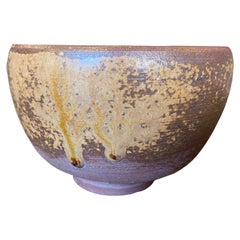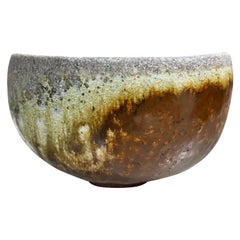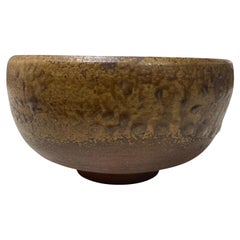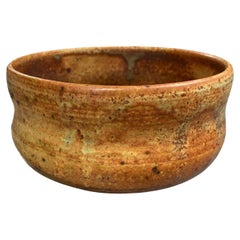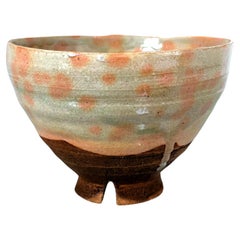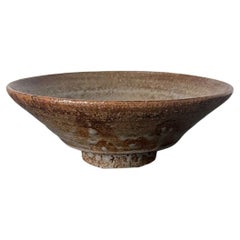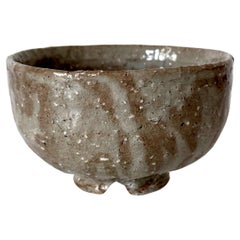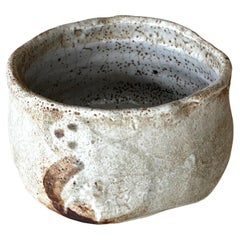Items Similar to Kichizaemon Raku Seinyu XIII "13th" Signed Antique Japanese Raku Chawan Tea Bowl
Want more images or videos?
Request additional images or videos from the seller
1 of 21
Kichizaemon Raku Seinyu XIII "13th" Signed Antique Japanese Raku Chawan Tea Bowl
$5,500
£4,175.51
€4,775.89
CA$7,684.30
A$8,546.62
CHF 4,462.78
MX$104,003.23
NOK 56,996.48
SEK 53,452.64
DKK 35,644.29
Shipping
Retrieving quote...The 1stDibs Promise:
Authenticity Guarantee,
Money-Back Guarantee,
24-Hour Cancellation
About the Item
A wonderfully glazed, impeccably made Chawan tea bowl by famed Japanese master potter the 13th Kichizaemon Raku, Seinyu (1887-1944) who was the eldest son of Konyu - the 12th Kichizaemon of the Raku family line of potters - known as the most noted and celebrated tradition of pottery within the world of Japanese tea. Kichizaemon Raku was the 13th master to carry on the family's esteemed name and tradition. The bowl features shifting textures and deep, rich colours which radiate in the light.
The term "Raku" was derived from the site where clay was dug in Kyoto in the late 16th century. The Kanji character for Raku translates to "enjoyment" or "fun/delightful" For 15 generations it has been the title and seal used by a lineage of potters whose work formed the central tradition in Japan. This lineage believes that 'Raku' refers to the potters who use the technique, not the technique itself. In the 16th century, the first of these potters, Chojiro is said to have come under the patronage of the Japanese tea master, Sen-No-Rikyu. According to legend, in 1598 a few years after Chojiro's death, ruler, Hideyoshi Toyotomi bestowed upon his adopted son, Jokei, a golden seal with the written symbol "Raku." Both the name and the ceramic style have been passed down through the family to the present ever since. The name and the style of ware have become influential in both Japanese culture and literature. Raku ware marked an important point in the historical development of Japanese ceramics, as it was the first ware to use a seal mark and the first to focus on close collaboration between potter and patron. Other famous Japanese clay artists of this period include Donyu (grandson of Chojiro, also known as Nonko; 1574–1656), Hon'ami Koetsu (1556–1637) and Ogata Kenzan (1663–1743). It influenced Horaku ware from Nagoya, Owari province in the later Edo period.
Raku Seinyu XIII was known for leading the Raku family through some tumultuous times and far-ranging changes in Japan. He researched techniques and glazes far more than any of his predecessors. He also published a series of research journals on tea ceremony called "Sado seseragi" between 1935 and 1942, which were a groundbreaking attempt for both research on tea ceremony and enlightenment.
This work has the signature/impressed stamp of Kichizaemon Raku Seinyu XIII as well as the original signed and sealed box.
Would be a great addition to any antique Japanese or Asian pottery ceramics collection or eye-catching stand-alone accent work in about any setting. Indeed, it is a very rare and scarce work.
Bowl dimensions: 3.25", 5" wide, 5" deep.
Box: 4.75" high, 5.6" wide, 5.6" deep.
- Dimensions:Height: 3.25 in (8.26 cm)Width: 5 in (12.7 cm)Depth: 5 in (12.7 cm)
- Style:Meiji (Of the Period)
- Materials and Techniques:
- Place of Origin:
- Period:
- Date of Manufacture:Early 1900s
- Condition:In very good to excellent vintage condition with no discernable flaws, cracks, chips, etc... The original box has light wear consistent with age and use (please see photos). Simply gorgeous and unique work overall. Very rare and scarce.
- Seller Location:Studio City, CA
- Reference Number:1stDibs: LU2254328284162
About the Seller
5.0
Platinum Seller
Premium sellers with a 4.7+ rating and 24-hour response times
1stDibs seller since 2016
908 sales on 1stDibs
Typical response time: <1 hour
- ShippingRetrieving quote...Shipping from: Van Nuys, CA
- Return Policy
Authenticity Guarantee
In the unlikely event there’s an issue with an item’s authenticity, contact us within 1 year for a full refund. DetailsMoney-Back Guarantee
If your item is not as described, is damaged in transit, or does not arrive, contact us within 7 days for a full refund. Details24-Hour Cancellation
You have a 24-hour grace period in which to reconsider your purchase, with no questions asked.Vetted Professional Sellers
Our world-class sellers must adhere to strict standards for service and quality, maintaining the integrity of our listings.Price-Match Guarantee
If you find that a seller listed the same item for a lower price elsewhere, we’ll match it.Trusted Global Delivery
Our best-in-class carrier network provides specialized shipping options worldwide, including custom delivery.More From This Seller
View AllKaneshige Toyo Japanese National Treasure Signed Bizen Pottery Chawan Tea Bowl
Located in Studio City, CA
A beautiful, perfectly shaped antique Bizen ware Chawan tea bowl by renowned Japanese master potter/artist Kaneshige Toyo (1896-1967) featuring a unique one of a kind, natural, organic forming ash glaze. Kaneshige is universally considered to be the founder of modern Bizen Yaki Ware pottery.
In 1956, Kaneshige was certified as a Living National Treasure (Important Intangible Cultural Heritage) for his work in Bizen Ware pottery/ceramics. Bizen Ware is a type of Japanese pottery traditionally from the Bizen province, presently a part of the Okayama prefecture. It is considered one of the Six Ancient Japanese Kilns (along with Echizen ware, Seto ware, Shigaraki ware, Tamba ware, and Tokoname ware).
The piece is signed on the base with one of Kaneshige's traditional incised marks (fundo weight mark of Toyo) .
The work also comes with the original Toyo Kaneshige...
Category
Mid-20th Century Japanese Showa Ceramics
Materials
Pottery, Stoneware
Japanese Asian Signed Studio Pottery Wabi-Sabi Ceramic Glazed Chawan Tea Bowl
Located in Studio City, CA
A stunning Japanese stoneware studio pottery chawan tea bowl that features a beautiful, heavy and sumptuously multi-glaze with wonderful shifts in color and texture. This bowl is wit...
Category
20th Century Japanese Showa Ceramics
Materials
Stoneware
Kaneshige Toyo National Treasure Signed Japanese Bizen Pottery Chawan Tea Bowl
Located in Studio City, CA
A beautiful, perfectly shaped antique Bizen ware Chawan tea bowl by renowned Japanese master potter/artist Kaneshige Toyo (1896-1967) featuring a unique natural, organic forming ash glaze. Kaneshige is universally considered to be the founder of modern Bizen pottery.
In 1956, Kaneshige was certified as a Living National Treasure (Important Intangible Cultural Heritage) for his work in Bizen Ware pottery/ceramics. Bizen Ware is a type of Japanese pottery traditionally from the Bizen province, presently a part of the Okayama prefecture. It is considered one of the Six Ancient Japanese Kilns (along with Echizen ware, Seto ware, Shigaraki ware, Tamba ware, and Tokoname ware).
The piece is signed/ sealed on the base with one of Kaneshige's traditional incised marks.
A rather engaging and scarce work. Would be a fantastic addition to any Japanese/Asian pottery or Bizen Ware collection or eye-catching stand-alone work in about any setting.
Kaneshige's work can be found in numerous prominent collections and museums including:
Aichi Prefectural Ceramic Museum, Seto, Japan
Brooklyn Museum, NY
Hagi Uragami Museum, Yamaguchi, Japan
Honolulu Art Museum, HI
Ibaraki Ceramic Art Museum, Kasama, Japan
Indiana Art...
Category
Mid-20th Century Japanese Showa Ceramics
Materials
Stoneware
Japanese Asian Signed Studio Pottery Wabi-Sabi Ceramic Glazed Chawan Tea Bowl
Located in Studio City, CA
A gorgeous Japanese studio pottery chawan tea bowl that features a wonderful reddish-orange glaze with various shifts in colour and texture.
This particular piece encompasses the...
Category
20th Century Japanese Showa Ceramics
Materials
Earthenware
Japanese Asian Antique Shino Yaki Ware Studio Pottery Wabi-Sabi Chawan Tea Bowl
Located in Studio City, CA
A beautiful Japanese Mingei Nezumi Shino Ware (志野焼, Shino-Yaki) pottery Chawan tea bowl for tea ceremony that features a sumptuous glaze with wonderful subtle shifts in color, patter...
Category
Mid-20th Century Japanese Showa Ceramics
Materials
Pottery, Stoneware
Japanese Asian Signed Studio Pottery Wabi-Sabi Ceramic Glazed Chawan Tea Bowl
Located in Studio City, CA
A gorgeous Japanese studio pottery chawan tea bowl that features a mix of shifting colors, glazes and textures as well as elements of Shino Ware and Hagi Ware. The piece radiates in...
Category
20th Century Japanese Showa Ceramics
Materials
Earthenware, Pottery
You May Also Like
Japanese Glazed Ceramic Gohon Chawan Tea Bowl
Located in Atlanta, GA
A bespoken Japanese ceramic glazed tea bowl with fabric insert, pouch and original padded wood tomobako box. The chawan has a slightly irregular wall supported by a high notched foot...
Category
Antique 19th Century Japanese Meiji Ceramics
Materials
Ceramic
Korean Ceramic Chawan Ido Tea Bowl with Soba Glaze Kuroda Touen
Located in Atlanta, GA
This ceramic chawan (tea bowl) was made in Korea during Joseon dynasty circa 18th to early 19th century. The bowl was of a "Small Ido" form with half-he...
Category
Antique Late 18th Century Korean Other Ceramics
Materials
Ceramic
Japanese Glazed Mino Tea Bowl Chawan Showa Period Ex-Musuem
Located in Atlanta, GA
A Japanese glazed ceramic tea bowl (chawan) in Gohon style likely made in Showa period of 20th century. Supported by a short foot ring with a notch, the bowl was made from coarse cla...
Category
Early 20th Century Japanese Meiji Ceramics
Materials
Ceramic
Antique Japanese Shino Ware Chawan Tea Bowl
Located in Atlanta, GA
On offer is a Japanese ceramic tea bowl (chawan) used in the traditional chado ceremony. The bowl was potted in clog form with a ring foot shaved extremely low. Its size and harmonious proportion make it perfect to be held in both hands during chado. Classified as shino ware...
Category
Antique 18th Century Japanese Edo Ceramics
Materials
Ceramic
Hagi-ware Chawan (tea bowl) by famous Seigan Yamane
Located in Fukuoka, JP
This exquisite Japanese tea bowl is a prime example of Hagi Ware, crafted by renowned potter Seigan Yamane. Known for his innovative approach to traditional Hagi pottery, Yamane’s wo...
Category
21st Century and Contemporary Japanese Ceramics
Materials
Ceramic
Japanese Mino Ware Oribe Type Chawan Tea Bowl
Located in Atlanta, GA
A Japanese Kutsu-gata (clog-shaped) chawan (tea bowl) circa 19th century possibly older. The stoneware bowl potted from buff clay has a slight irregular shape and an unusual depth for a tea bowl. Of Mino ware...
Category
Antique 19th Century Japanese Meiji Ceramics
Materials
Ceramic
More Ways To Browse
Japanese Ceramics
Antique Fire Signs
13th Century Furniture
Japanese Raku
Japanese Raku Ceramics
Seal Box
Antique Ruler
Japanese Tea Ceremony
Japanese Bowl Signed
Potters Stand
Japanese Raku Pottery
Antique Fire Boxes
16th Century Japanese
Antique Fire Bowl
Japanese Stamps Rare
Japan Tea Box
Meiji Period Bowl
Asian Box On Stand
